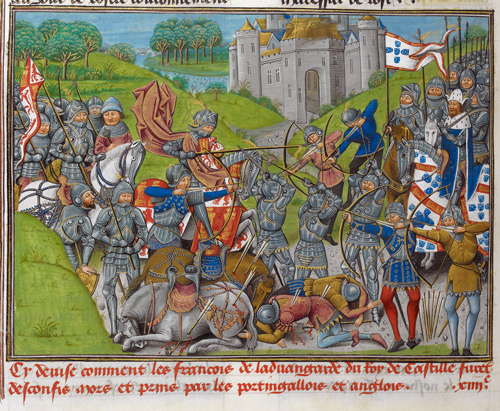

Badon around AD 500 notable, but not sufficient to stem the flood of Anglo-Saxons that were coming to Roman Britain. It is possible, but by no means certain, that a British war leader by the name of Arthur resisted the Anglo-Saxon migration and won a notable military victory against the Anglo-Saxons at the Battle of Mt. The indigenous Celtic population of Britain resisted the coming of the Anglo-Saxons as much as it had resisted the coming of the Romans, and had about as much luck as they had had against the Romans. Learn More: Being Anglo-Saxon King Arthur and the Battle of Mt.

They spoke Germanic languages, they were still pagans worshiping Norse gods such as Thor and Odin, and they were illiterate as well. The Anglo-Saxons who came to England at this time were barbarians, as Romans would have defined them. Some had served in the Roman army even before 408, and the Anglo-Saxon mercenaries serving in Roman Britain may have notified their ethnic relatives back in Germany that the Roman army had left: “This would be a good time for us to move into this part of the world.” The Anglo-Saxons were not total strangers to Britain. (Image: dun_deagh – Flickr: Grubenhaus, Gearwe, Bede’s World, Jarrow/Public domain) Anglo-Saxons were Germanic peoples who worshipped Norse gods. For example, there was a kingdom of Wessex, which comes from the West Saxons Sussex is where the South Saxons lived and perhaps the most famous of them, Northumbria.Ī typical Anglo-Saxon dwelling called a Grubenhaus. Watch it now, on Wondrium.īy 600, the Anglo-Saxons had established several independent kingdoms within territories that had once been Roman. This is a transcript from the video series The Early Middle Ages. Indeed, the boundaries of modern England roughly correspond to the territories that were going to be settled by the peoples called, for the sake of convenience, the Anglo-Saxons. In 408, either just before or just after the Roman army had withdrawn, Angles, Saxons, and Jutes began first to raid Roman Britain, and then to settle in certain areas.

Anglo-Saxon coastline from Hill, ‘An Atlas of Anglo-Saxon England’ (1981)/Public domain) Shepherd, 1926 edition, with clarifications supplied by en:User:Everyking per references used in en:Penda of Mercia. (Image: User:Hel-hama Vectorization of File:Britain peoples circa 600.png drawn by User:IMeowbot border data from CIA, people locations from The Historical Atlas by William R. Map of Britain in 600, showing the location of various different peoples.


 0 kommentar(er)
0 kommentar(er)
